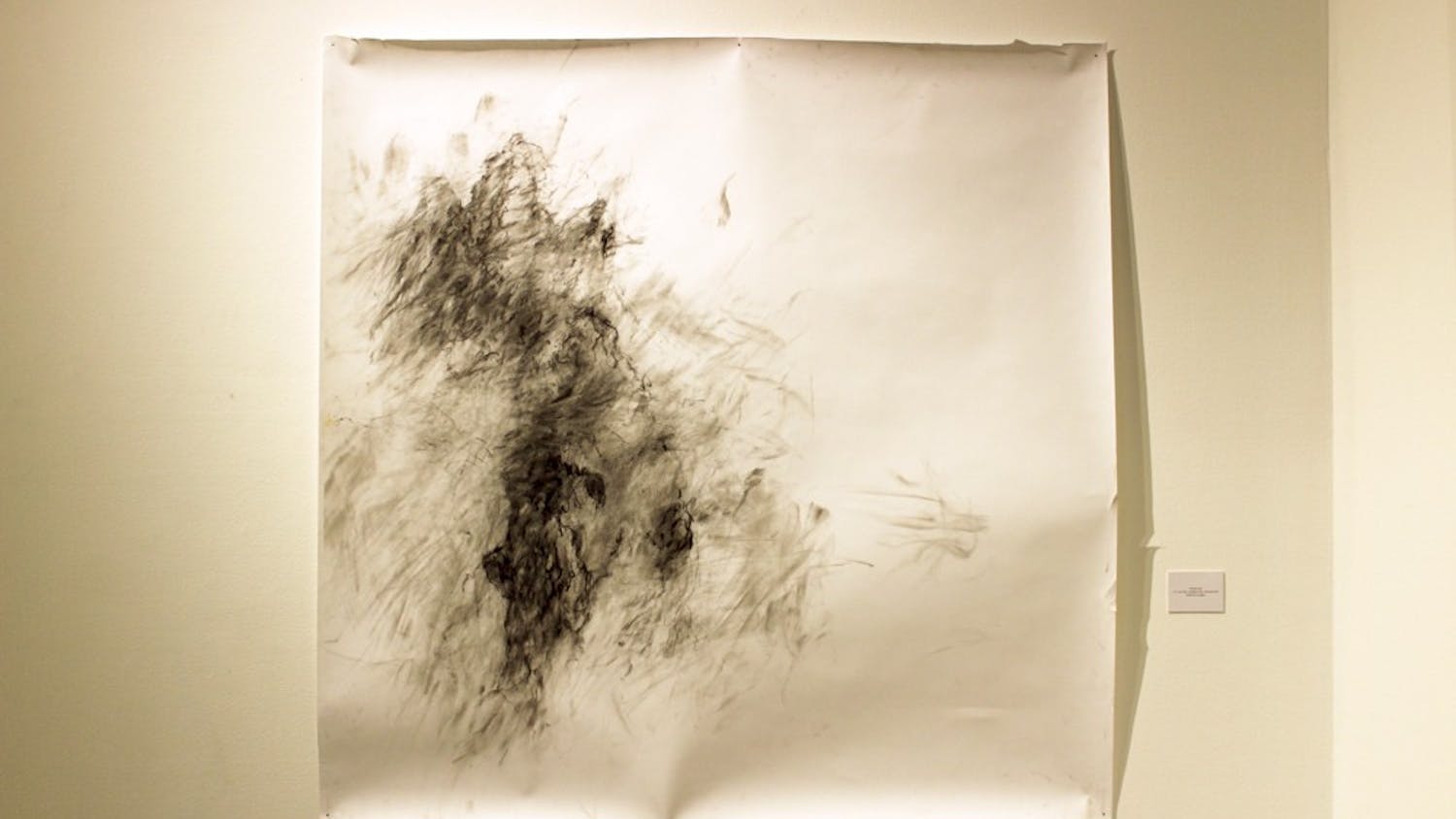Studio art professor Christina Seely’s work puts art into an ongoing dialogue about climate change. Her new solo exhibition “Dissonance,” currently showing at Jaffe Friede and Strauss Galleries in the Hopkins Center until March 6, intertwines her affair with the Arctic with the urgency of the climate crisis.
Her exhibition includes several projects, including “Markers of Time,” “Next of Kin,” “Species Impact,” “Terra Systema” and “Perdita,” as well as a video piece also entitled “Dissonance.”
“Each project reflects a facet or lens of change. Every project builds off the previous,” Seely said.
All of the pieces work together to highlight the complexities of the contemporary human relationship with the natural world. The striking beauty of each piece both showcases and obscures the reality of an ever-evolving landscape, globally shaped by the effects of human actions. Seely confronts the viewer, intimately and spectacularly, with the dark truth. And even though such realities lie thousands of miles away from the gallery, her artwork offers an opportunity to witness them up close.
“Markers of Time” offers sharp juxtapositions that reveal how jarring the impacts of human action have been on natural cycles in the Arctic. Meanwhile, “Species Impact” takes advantage of the daguerreotype medium to reflect the extreme losses of the sixth mass extinction.
“I’m excited to see how [Seely’s] work has been evolving ... especially with her use of film and video,” said Jessica Hong, associate curator of global contemporary art at the Hood Museum. “I’m really interested in the gallery and the museum space being this really potent, at times fraught, mediated site of quiet, the slow looking.”
Through a single-channel video featuring various scenes from Seely’s trip to Greenland in 2019, “Dissonance” encaptures the viewer with footage of climate change, depicting shards of melting ice juxtaposed against a background of meltwater.
“In the last year or so, there’s been a real sense of urgency about what’s happening, and I feel it and I know it in my body in a way that a lot of people don’t,” Seely said. “I’ve carried with me this really deep change and it’s very obvious there in Greenland.”
In “Dissonance” specifically, Seely said she wanted to do something different. Through having the body positioned in front of the view, Seely adds a dimension that allows the viewer to exist within the frame of the work, immersed in every breath and footstep.
“I feel like because the scale of the Arctic and of what’s happening is so hard to translate that I’ve started to think about my body as a conduit — so for the viewer there’s a kind of emotional connection that’s possible,” Seely said. “[“Dissonance” is] about trying to find that uncomfortability, but also this sort of real, deep connection with the natural world and love I have for that place. Hopefully, that translates as dissonance for the viewer.”
With the footage, Seely sought to translate her own understanding of the surroundings with the audience, providing a “visceral, multi-sensory experience that’s so hard to explain.” Her focus was to get into the audience’s body, to give viewers the experience of having this emotional reaction. Inherently, she said, she fails. But she succeeds in providing a scale for just how imminent and sizeable the reality is — and just how vulnerable we are.
Seely draws inspiration from her passion for her surroundings; her process entails full immersion in locations like Greenland and Panama. For a previous project titled “Lux,” Seely moved to the Arctic by herself to witness the phenomenon of perpetual day and night, investigating humanity’s relationship with time.
During these trips, Seely said she focuses on gathering material to archive for future projects, often experimenting as she goes. As she has developed as an artist, she has also developed a lengthy relationship with the region over an especially “complicated time and intense moment of change.”
Seely said her devotion to the North has continuously informed the subjects of her artwork.
“I have this love affair with the arctic in particular. I’m enamored with it — it’s magical. It’s other-worldly.” The same sense of “enchantment and surrealness” is something she said she hopes to captivate and share with the viewer.
Seely’s work is not only aesthetically intriguing and emotionally present, but politically potent as well. With the effects of climate change becoming more and more evident, she documents this transformation in her art.
“Art can be a very important bridge ... [it is] a very important space of mediation between different disciplines and ways of seeing the world,” said art history professor Chad Elias. Elias said he was inspired to organize a symposium entitled “Futures Uncertain” after seeing Seely’s exhibition “Next of Kin” at the Harvard Museum of Natural History. The symposium investigated artistic responses to the anthropocene and aimed to put art into dialogue with the scientists, engaging the two in an institutional space.
“We don’t just leave it up to scientists to get their messages out to the wider public,” Elias said. “I think it’s a real challenge for scientists at the moment because their knowledge is very specialized and we’re operating in a media landscape. I don’t think you can just leave it up to just the scientists to communicate the urgency around climate change.”
Dartmouth and Harvard are not alone in their efforts to have more conscious art exhibits, as many colleges are trying to meet the growing demand for art as a medium for social change.
“I’ve noticed on campus there’s been an increase in attention for environmental issues related to consumption, climate change, our imprint on the landscape,” Hong said. “Christina has been contending with [climate change] throughout her entire practice.”
Seely said that the College has also encouraged her to bring her climate change exhibition to campus.
“I’ve had a massive amount of support from the Institute of Arctic Studies and the sciences in particular ... My involvement with the Institute of Arctic Studies has been one of the most important aspects of my time at Dartmouth,” Seely said.
Seely also acknowledged how relevant it is to bring these current issues to a college setting and expressed how touched she is to have had her artwork be so well received.
“I’ve been really moved by the reactions of my students and students in general. It’s been a really beautiful exchange to have my work on campus,” Seely said. “It feels like my work has real weight and is doing something. It gets to have a life and I think that is really important.”



